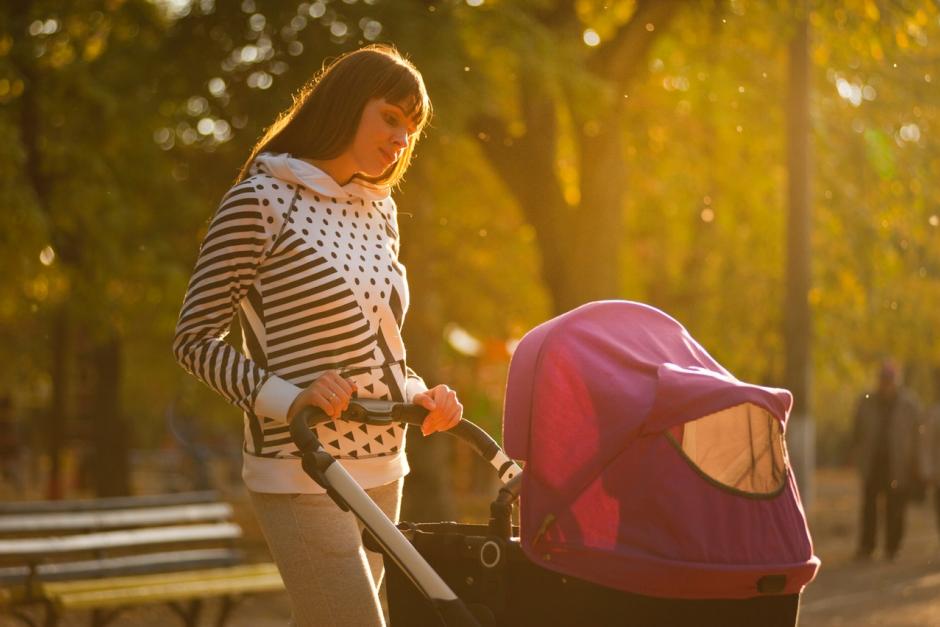The world of prams and pushchairs can be confusing. There are so many brands and styles to choose from. But while it can be daunting, it’s important you get it right. You’ll need to find one that works for you, your child and your lifestyle.
To help make things a little easier, here we’ll answer your most important questions about all things prams and pushchairs.
Prams, pushchairs, and buggies – what’s the difference?
The perfect place to start. What actually is a pram? And how does it differ from a pushchair or a buggy? And what’s a 3-in-1 travel system? We’ll explain:
§ Prams: Prams are usually designed to carry babies up to six months old. They usually have four wheels and an adjustable bed that can lie flat or tilt upwards into a seat. Prams are typically parent-facing, meaning your baby lies or sits facing you.
§ Pushchairs: Pushchairs are designed to hold older babies and toddlers. They typically have four wheels but can have three. They have a fixed seat that faces forwards so your little one looks out at the world as you push them. Pushchairs are sometimes called strollers too.
§ Buggies: Buggies are similar to pushchairs in that they’re for older babies and toddlers and are forward facing. Buggies tend to be lighter than pushchairs, with collapsible and foldable frames that make them easy to store and carry in the backs of cars or on public transport.
§ Combination prams: Combination prams, also called 2-in-1 prams, are a versatile option that combines a pram with a pushchair. They consist of a sturdy frame with three or four wheels. On top of that frame, you can usually fit a bassinet basket for babies, like you’d see on a pram. But you can then switch the bassinet out for a pushchair-style seat for an older baby or toddler. Most prams today are actually combination prams.
§ Travel systems: Travel systems are combination prams that also allow you to fit a baby’s travel seat onto the frame too, usually with the help of baby seat adaptors. They’re the most versatile option available and are also called 3-in-1s as they can fit a bassinet, pushchair seat, and car seat on one frame. Many combination prams today are travel systems.
§ Twins: These are either twin prams, twin pushchairs, or twin travel systems that are designed to carry two babies or toddlers.
Some manufacturers use these words in slightly different ways, but the above definitions are generally the most widely used. Often you see the words pram, combination pram, and travel system used interchangeably, as most prams today are in fact travel systems.
Which is right for me?
Choosing the right pram, pushchair, buggy, or travel system depends on a few factors. These include the age of your child, how many children you have, and your lifestyle.
If you have a newborn
If you have a newborn or are expecting, consider a pram, combination pram, or travel system.
Travel systems and combination prams are usually more expensive than prams, but they often make a better investment as you can use them as a buggy when your child gets older. You can use a good travel system or combination pram for three years or more, even longer if you have more children.
If you have an older baby or a toddler
If your little one has reached the age they can sit up-right by themselves, you need a pushchair or a buggy. You could opt for a travel system or combination pram too if you have another younger child. But if you don’t need to use a bassinet, you don’t need a travel system or combination pram.
If you want something sturdy, that you can walk or even run with, a pushchair is a sensible option. Pushchairs often have space beneath the chair that’s ideal for storing spare clothes, coats, changing gear, bottles of water, and snacks. There’s often enough space to store a moderate amount of shopping too. When you need something lighter, for shorter journeys, that can be easily folded and stored, a buggy is a better choice. Buggy’s usually offer less storage space, however.
There’s a trade-off from being able to easily store and carry a buggy, versus the storage space offered by a pushchair. Whether you need a pushchair or a buggy, really depends on which is more important to you.
If you have a baby and regularly use a car seat
If you frequently use a baby car seat, a travel system is a good choice. You can store the frame in the boot of a car, then when you stop, you can unfold the frame and easily clip the car seat to it. Car seats aren’t ideal for long walks, but if you regularly drive and then go for short walks, a travel system is ideal.
If you have twins or two children of similar ages
If so, take a look at twin versions of the above, like twin combination prams or travel systems. Most fit identical bassinets or chairs side-by-side, or one above the other. Some can also fit a bassinet and a seat at the same time, in case you have a young baby and a toddler.
What other options and features should you consider?
There are plenty of other options to think about when it comes to choosing a pram, a buggy, or a pushchair. Some of the most important include:
Folding: Most prams, buggies, and pushchairs can be folded up to make them easy to store and transport. Some can fold into smaller shapes than others, however. Make sure the ones you’re interested in can fold into the dimensions you need to fit in the back of your car or on public transport, as well as in your available storage space.
Storage: Pushchairs, prams, combination prams, and travel systems often offer storage space beneath the chair, whereas buggies tend to offer less space.
Weight: Some prams and pushchairs can be large and reasonably heavy, whereas others are specially designed to be light-weight. If you’ll likely need to carry it regularly, such as up a staircase to a first-floor flat, then take a look at the more light-weight options.
Number of wheels: Most of the options you’ll see have four wheels, but some pushchairs and prams have three. Four wheels generally give more stability, but three wheels are more manoeuvrable.
Off-road wheels: Some prams and pushchairs have wheels that are designed for terrain rougher than pavements. These are suitable if you want to take your little one off-road across parks or on countryside walks.
How to shop for a pram or pushchair
You can often find the best prices and deals online, but it’s also a good idea to physically test-drive the prams or pushchairs you’re interested in. We advise you mix both online and in-person shopping when it comes to choosing a pushchair or pram. We recommend:
Step 1: Decide which option you need: Decide whether you want a pram, a pushchair, a buggy, or a combination pram or travel system. Consider which other options you need too, like storage space and folding dimensions.
Step 2: Do your research: Read and watch online reviews. Talk to other parents. Make a list of the brands and models you’re interested in.
Step 3: Test-drive: Visit a shop that allows you to give prams and pushchairs a test drive. This is a really important step, as you can get a good idea of how models feel, how they move, how easy they are to fold, and how heavy they are.
Step 4: Buy online: You can often find lower prices online. You can test-drive prams and pushchairs in-person to make your choice, then you can buy your chosen model online.
To help you get started on your journey to finding the perfect transport for your little one when you’re out and about, you can view our full range of pushchairs, prams, buggies, combination prams and travel models.
Sources:
https://www.johnlewis.com/buying-guides/prams-and-pushchairs-buying-guide



Leave a Comment: